HMS Belfast |
|
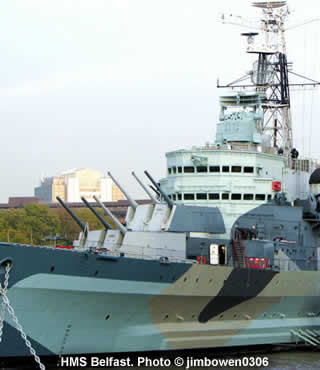 |
|||
A retired WW2 Battle Cruiser, now a floating museum |
||||||||
Listen to this article |
||||||||
|
||||||||
 Photo DanieVDM |
||||||||
HMS Belfast is a battle cruiser that, after years of service in war and achievements in strategic victories, was given to the nation’s public as a great statement of Britain’s naval history. Launched in 1938 and commissioned by the Royal Navy the following year, the HMS Belfast served throughout the Second World War and continued in battle fleets until 1965. |
||||||||
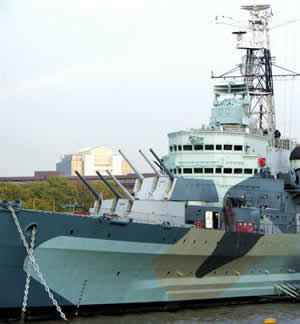 HMS Belfast is the Royal Navy's heaviest ever cruiser Photo jimbowen0306 |
||||||||
At the very start of the Second World War, HMS Belfast and her crew proved their worth by intercepting the German liner ‘Cap Norte’. It was trying to return to Germany disguised as a neutral vessel when it was boarded and conquered by the crew of HMS Belfast. It was the largest enemy liner to be intercepted to date at that time, and the crew received ‘prize money’ for their achievement! The HMS Belfast went on to do many great things, in fact – by the end of World War Two HMS Belfast was known as the most powerful cruiser in the Navy. She served in the arctic in 1943, and played an important part in bringing down the German enemy ship ‘Scharnhorst’ in the freezing waters. She was also one of the first ships to open fire on the Germans in Normandy on D-day, June 6, 1944. |
||||||||
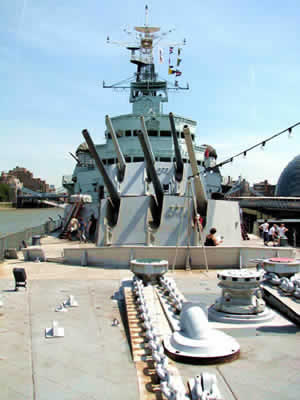 She served in World War II and is now berthed on the River Thames near Tower Bridge as a museum ship Photo DanieVDM |
||||||||
HMS Belfast was launched on St Patrick's Day in 1938 in Belfast by Anne Chamberlain, the wife of the then Prime Minister, Neville Chamberlain. |
||||||||
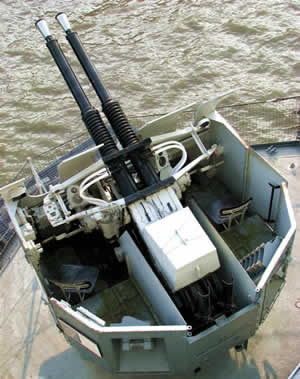 One of the compliment of 6-inch anti-aircraft guns Photo jimbowen0306 |
||||||||
During the last few days of WW2, HMS Belfast was spotted in the North Sea by a German submarine. She would have made an easy target, but thankfully the German commander decided not to fire, as the war was almost over. |
||||||||
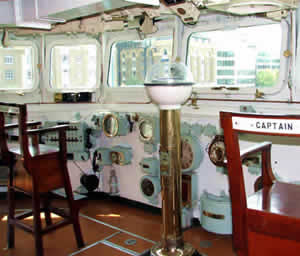 The Captains Bridge, where engine and steering commands were passed to the helmsman, 6 decks below! Photo DanieVDM |
||||||||
After the Second World War, HMS Belfast served in the Far East and in the Korean War before her final commission, and a well earned rest after having sailed nearly half a million miles in her lifetime. It was then an old commander of hers, Rear Admiral Sir Morgan Morgan-Giles, who saved her from the scrap yard and presented her as a public attraction. Now there are exhibitions, activities and fantastic tours that bring the HMS Belfast back to life, in honour of all she and so many other battleships have done for their country. |
||||||||
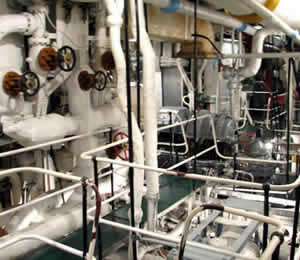 The Engine Room, taking 30 crew members to operate Photo DanieVDM |
||||||||
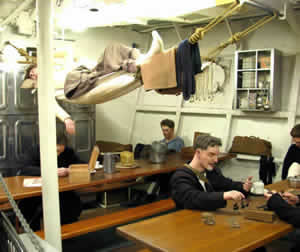 The crew quarters, where the crew slept, ate and stored their belongings Photo DanieVDM |
||||||||
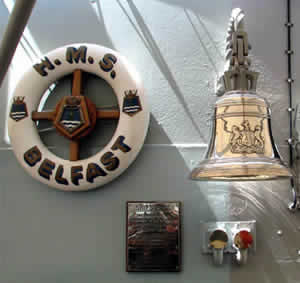 The Ships Bell Photo DanieVDM |
||||||||
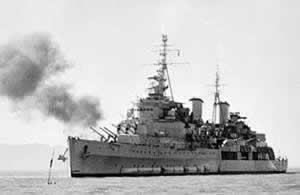 HMS Belfast in action during WW2 Source WikiMedia (PD) |
||||||||
|
||||||||
The ship is open to visitors daily, 10am to 6pm (5pm November to February). Entry costs around £13 for adults, £7 concessions, children under 16 FREE. Tel: 0207 940 6300 |
||||||||
|
Pocket Britain is optimised for use on a smartphone or tablet with internet access. All content is subject to copyright. All reasonable methods have been used to ensure information supplied is accurate at the time of publication. However, it is advisable to check information before relying on it. Privacy Policy |